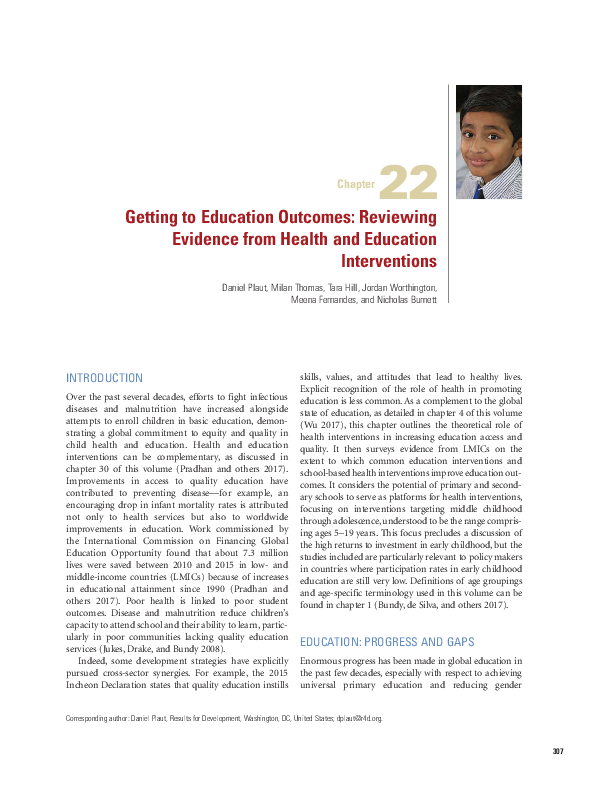
DCP Chapter 22: Getting to Education Outcomes: Reviewing Evidence from Health and Education Interventions
Publication year:
2017
English
Format:
pdf (210.5 KiB)
Publisher:
The World Bank Group
The theoretical role of health interventions in increasing education access and quality is outlined in this chapter. The authors survey evidence from low- and middle-income countries (LMICs) on the extent to which common education interventions and school-based health interventions improve education outcomes, by considering the potential of primary and secondary schools to serve as platforms for health interventions and focusing on interventions targeting middle childhood through adolescence (ages 5–19 years). Over the past several decades, efforts to fight infectious diseases and malnutrition have increased alongside attempts to enroll children in basic education, demonstrating a global commitment to equity and quality in child health and education. These interventions can prove complementary, and improvements in access to quality education have contributed to preventing disease. About 7.3 million lives were saved between 2010 and 2015 in LMICs because of increases in educational attainment since 1990. Poor health remains linked to poor student outcomes, as disease and malnutrition reduce children’s capacity to attend school and their ability to learn, particularly in poor communities lacking quality education services.
>> Press here to return to the Disease Control Priorities (3rd Edition) Start Page
Read full abstract
Authors
View & Download
Document information
Publisher
Authors
Format
Rights
© Author/Publisher
Found a mistake? Help us improve!
If you have noticed a document assigned to the wrong author or any other inaccuracies, let us know! Your feedback helps us keep our data accurate and useful for everyone.
Share
Link
